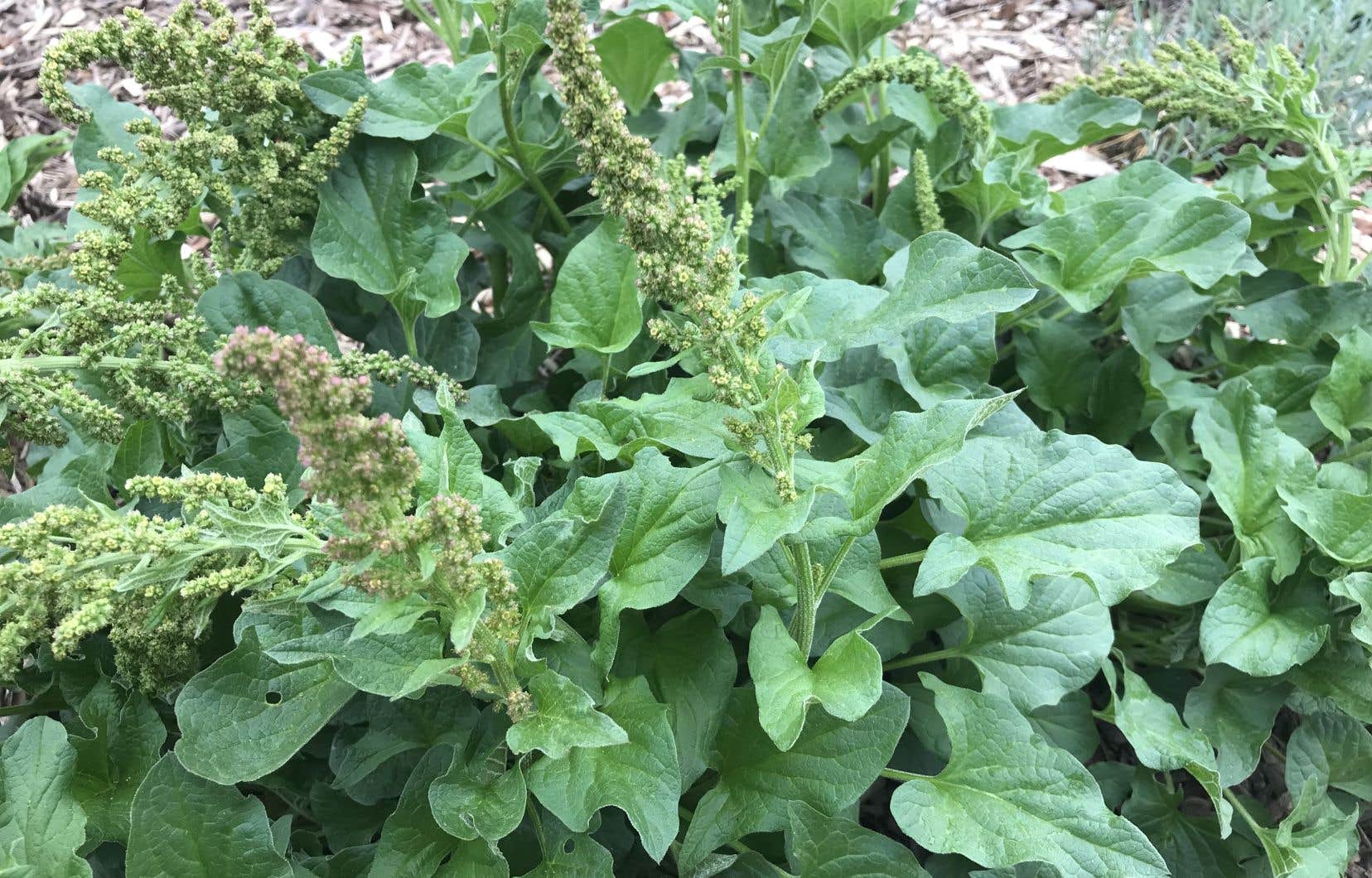This text is part of the special book Plaisirs
You only have to plant them once for delicious plants, every year! To get the most out of vegetable perennials, they are harvested regularly; this will prolong and increase their yield, while preventing them from spreading anywhere in the garden. Here are eight species to perpetuate in the vegetable garden.
1. Bon-Henri Goosefoot
Bon-Henri’s lamb’s-quarters produce thick, fleshy, iron-rich leaves, making it an ideal spinach substitute. It is delicious when cooked, fried, or steamed. However, avoid consuming it raw. Bon-Henri’s flower stalks grow throughout the season, starting before the asparagus and ending well after, in the fall. To best appreciate this productive vegetable, the stalks are picked at the base and prepared like asparagus. Be careful, the plant will turn pale if allowed to go to seed. 55 cm, 30 cm, hardiness zone 3, sun/partial shade
2. Caucasian Spinach
Vigorous Caucasian spinach can be grown vertically using a support. Without support, it will fall back just as well. A versatile plant, it can grow in full sun or shade, creeping or climbing. Many palates will appreciate its mild flavor. Raw or cooked, its green leaves whet the appetite. 3 m, 50 cm, hardiness zone 3, sun/partial shade/shade
3. Chervis
This plant cousin of the carrot offers sweet roots, with a subtle nutty taste. We avoid growing it in pots, since it likes to take root deeply. It germinates slowly and its taproot is sensitive to transplantation. Pro tip: it is better to prune the plant before it bends under the weight of its seeds. 1.5m, 55cm, hardiness zone 4, sun
4. Scottish lovage
Scottish lovage, also known as sea parsley, has a delicate flavor that combines the taste of celery with that of parsley. Although it is less famous than its intensely flavored cousin, lovage has nothing to envy modern varieties of celery when it comes to taste. Indeed, its leaves and stems have a sweetness that will lend itself perfectly as a green vegetable in your dishes. 60 cm, 60 cm, hardiness zone 3, sun/partial shade
5. Asparagus
While growing asparagus is easy, it has its particularities. Its aerial and light foliage allows the sun to penetrate to its feet. It therefore requires an organic mulch to control weeds. In the vegetable garden, it is possible to associate asparagus with early bulbs, such as tulips, whose colorful and sweet blooms can fill the gap left by the harvest. Another option is to reserve a sunny space specifically for growing asparagus. 1.3 m, 40 cm, hardiness zone 3, sun
6. Rhubarb
Rhubarb, massive in size, is spectacular in landscaping. To keep it very pretty, we cut the flower when it is at the button stage. This will prevent yellowing and, as a bonus, you can taste it like a cauliflower! Be careful, rhubarb will require a lot of water if you place it in full sun. To avoid these problems, one can use a compost that will retain moisture and support its growth. Otherwise, we keep her away from the harsh afternoon sun. 1.5m, 1m, hardiness zone 3, sun/partial shade
7. Perennial Alliums
Everything is eaten in the alliums: the stem, the flower and the bulb. So you can expect to harvest often, especially with plants like chives or garlic chives. We savor them when the flower buds appear, then when they let their pretty petals burst. Caution Onion maggot and leek moth tend to attack most alliums. 30 to 60 cm, 50 cm, hardiness zone 2 and +, sun
8. Wild Rocket
The small, honeyed flowers and leaves of wild arugula have a slight hint of spiciness, similar to that of cultivated arugula. Chewable, wild arugula can withstand high temperatures and droughts. From May to October, you can harvest the outer leaves every week, which will allow the rosette to grow well. It is advisable to leave a few flowers before the arrival of autumn so that they can reseed themselves. 60 cm, 30 cm, hardiness zone 4, sun/partial shade
This special content was produced by the Special Publications team of the Duty, relating to marketing. The drafting of Duty did not take part.
